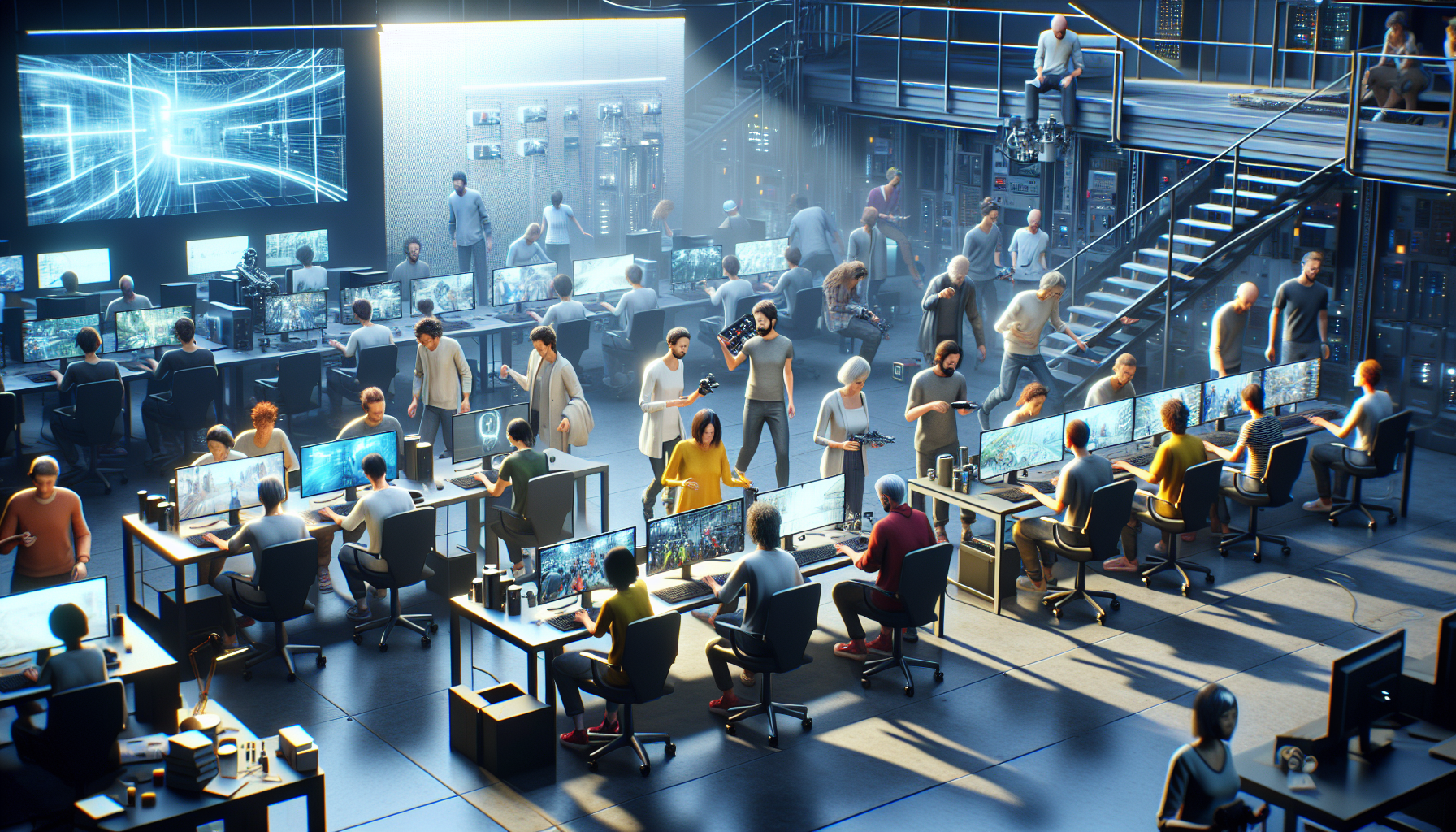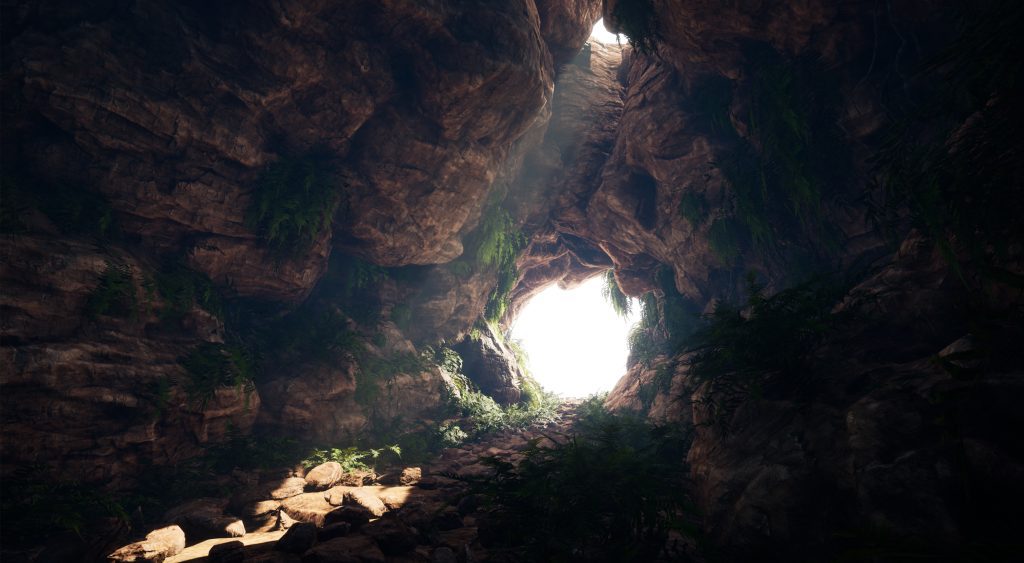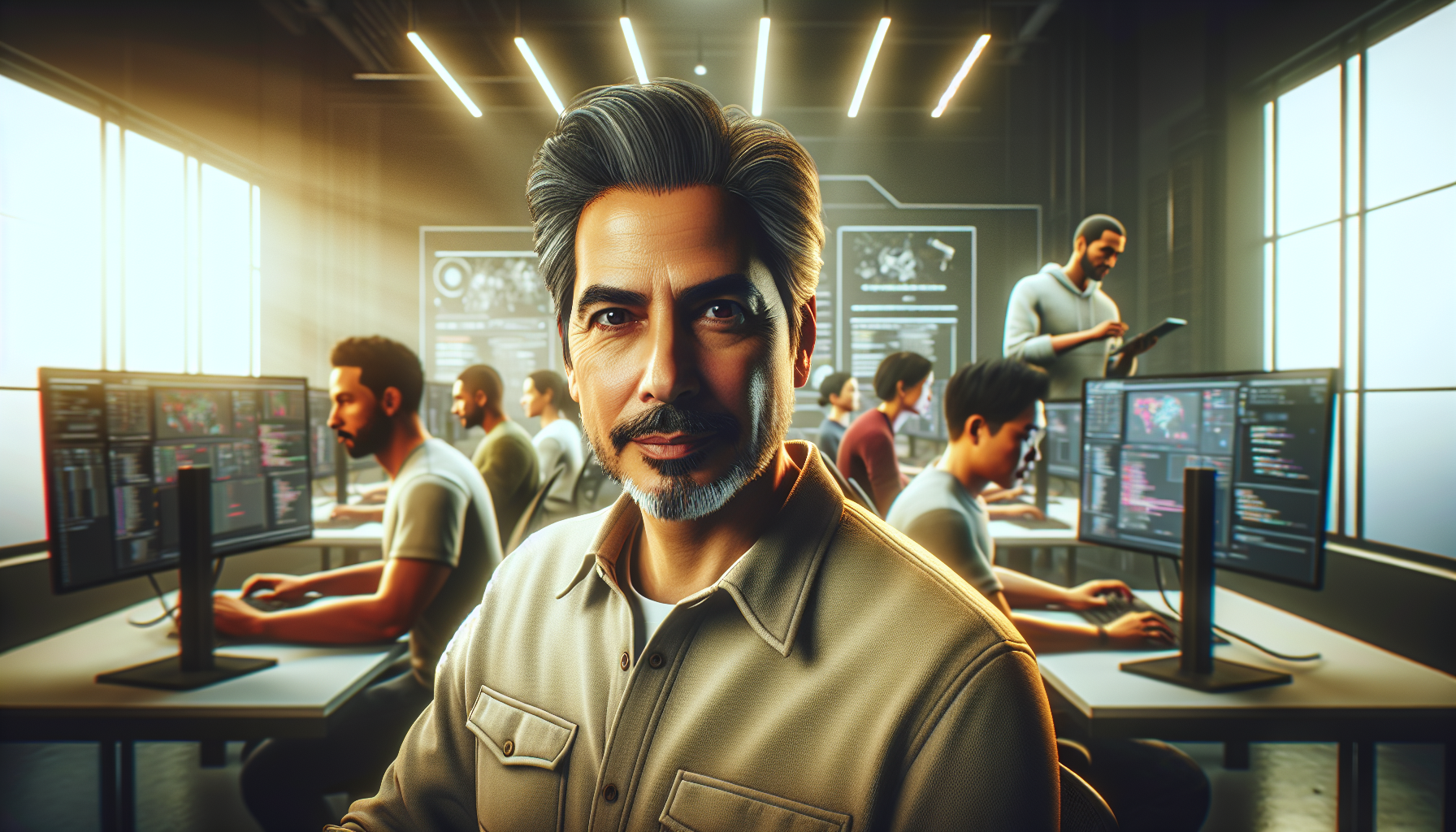Overview of Real-Time Global Illumination

What is real-time global illumination?
Real-time global illumination (GI) is a technique used in 3D graphics to simulate realistic lighting by accounting for both direct and indirect light. Direct light comes from a light source, while indirect light is the result of light bouncing off surfaces in the scene. Real-time GI aims to provide realistic lighting effects in real-time applications, such as video games and virtual reality.
Simulating how light interacts with surfaces, real-time GI creates more immersive and visually appealing environments. Common techniques such as ray tracing and sparse voxel octree cone tracing achieve real-time GI, though they can be computationally intensive and require optimization to maintain acceptable performance.
Techniques and Algorithms
Real-time Global Illumination (RTGI) strives for realistic lighting in 3D scenes by simulating how light interacts with objects. One method, ray tracing, meticulously tracks the path of light as it bounces off surfaces. This approach delivers stunning visuals by accounting for reflections, refractions, and intricate shadows. However, ray tracing can be computationally expensive.
Another approach, sparse voxel octree cone tracing, uses a clever data structure to approximate how light bounces. This method offers a balance between accuracy and performance. Additionally, middleware solutions like Unity’s Enlighten pre-calculate lighting information for static scenes, storing it in lightmaps for efficient application during rendering. These various techniques in RTGI, though diverse in complexity, all share the same goal: to create immersive and natural-looking lighting effects in real-time.
Applications and Use Cases
RTGI goes beyond just games! While it creates stunning visuals in video games with dynamic lighting like sunsets or flickering torches, it has other applications too. Architects use RTGI to visualize how light interacts with their designs, helping them make informed choices about lighting and materials.
Similarly, virtual reality experiences benefit from RTGI’s realistic lighting, making them more immersive and believable. Even the film industry utilizes RTGI to create realistic lighting for CGI scenes, saving time and resources compared to traditional methods.
The Challenges of Real-Time Global Illumination in Gaming
- Computational Complexity
- Implementing real-time global illumination (GI) is highly computationally intensive, demanding significant processing power. This complexity poses a major challenge, especially for smaller studios lacking high-end hardware and resources for code optimization. Techniques like ray tracing and sparse voxel octree cone tracing require powerful GPUs and optimized algorithms, making it difficult for developers to achieve realistic lighting.
- Implementing real-time global illumination (GI) is highly computationally intensive, demanding significant processing power. This complexity poses a major challenge, especially for smaller studios lacking high-end hardware and resources for code optimization. Techniques like ray tracing and sparse voxel octree cone tracing require powerful GPUs and optimized algorithms, making it difficult for developers to achieve realistic lighting.
- Performance Optimization
- Achieving real-time performance with GI is challenging even with advanced hardware. Developers must balance visual quality with performance to ensure smooth gameplay. Optimization strategies, such as reducing lightmap resolution, employing level-of-detail (LOD) techniques, and implementing efficient light propagation algorithms, are essential but require significant expertise and effort.
- Achieving real-time performance with GI is challenging even with advanced hardware. Developers must balance visual quality with performance to ensure smooth gameplay. Optimization strategies, such as reducing lightmap resolution, employing level-of-detail (LOD) techniques, and implementing efficient light propagation algorithms, are essential but require significant expertise and effort.
- Maintaining Visual Quality
- Ensuring high visual quality while optimizing for performance is a critical challenge. Many optimization methods involve trade-offs that can impact visual fidelity. For instance, lower-resolution lightmaps and simplified LOD geometry can enhance performance but at the cost of visual accuracy. Developers must navigate these compromises to deliver the best possible visual experience.
Implementing Real-Time Global Illumination: A Step-by-Step Guide

Step 1: Setting Up the Environment
To implement real-time global illumination, you first need to set up your development environment. This involves selecting the appropriate tools and libraries for your project. For this example, we’ll use Unity and its Enlighten system for real-time GI. Ensure you have the latest version of Unity installed and create a new project.
Next, you’ll need to enable real-time global illumination in your project settings. Open the Lighting window (Window > Rendering > Lighting) and check the “Realtime Global Illumination” option. This will enable Enlighten’s real-time GI features for your project.
Step 2: Configuring Light Sources
Once your environment is set up, you need to configure your light sources to use real-time GI. In Unity, select a light source in your scene and open the Light component in the Inspector. Set the Mode property to “Realtime” to enable real-time lighting for that light source.
Next, adjust the Indirect Multiplier property to control the amount of indirect lighting contributed by the light source. A higher value will result in more indirect lighting, while a lower value will reduce it. Experiment with different values to achieve the desired lighting effect for your scene.
Step 3: Optimizing Performance
With your light sources configured, the next step is to optimize your scene for performance. Start by reducing the resolution of your light maps to improve performance. Open the Lighting window and adjust the Realtime Resolution property to a lower value. This will reduce the resolution of the lightmaps used for real-time GI, improving performance at the cost of visual quality.
Next, implement level-of-detail (LOD) techniques to simplify the geometry in your scene. This involves creating multiple versions of your models with varying levels of detail and switching between them based on the camera’s distance from the model. This can help reduce the computational load and improve performance.
FAQs

How does ray tracing contribute to real-time global illumination?
Ray tracing is a technique used in real-time global illumination to calculate the path of light as it interacts with surfaces in a scene. By tracing the paths of individual light rays, ray tracing can simulate reflections, refractions, and shadows with a high degree of accuracy. This results in realistic lighting effects that enhance the visual quality of 3D scenes.
In real-time applications, ray tracing can be computationally intensive, requiring powerful GPUs and optimized algorithms to achieve acceptable performance. However, advancements in hardware and software have made real-time ray tracing more accessible, allowing developers to implement realistic lighting in their games and applications.
How can developers optimize real-time global illumination for performance?
Developers can optimize real-time global illumination for performance by implementing several techniques. Reducing the resolution of lightmaps can help improve performance, although it may result in lower visual quality. Using level-of-detail (LOD) methods to simplify geometry can also reduce the computational load, improving performance without significantly impacting visual quality.
Other optimization techniques include using efficient algorithms for light propagation, adjusting the indirect multiplier for light sources, and disabling unnecessary environmental contributions. By carefully balancing these optimizations, developers can achieve realistic lighting effects while maintaining acceptable performance in their games and applications.
Future of Real-Time Global Illumination

The future of real-time global illumination is promising, with advancements in hardware and software driving new possibilities. Here are five predictions for the future of real-time GI:
- Increased Accessibility: As hardware becomes more powerful and affordable, real-time GI will become more accessible to developers of all sizes, enabling more studios to implement realistic lighting in their games.
- Improved Algorithms: Continued research and development will lead to more efficient algorithms for real-time GI, reducing computational complexity and improving performance.
- Integration with AI: Artificial intelligence will play a significant role in optimizing real-time GI, with AI-driven techniques helping to balance visual quality and performance.
- Enhanced Realism: Advancements in real-time GI will result in even more realistic lighting effects, further enhancing the visual quality of games and applications.
- Broader Applications: Real-time GI will find applications beyond gaming, including virtual reality, architectural visualization, and film production, driving new innovations in these fields.
More Information
- Real-time global illumination techniques? – Reddit
- Manual: Realtime Global Illumination using Enlighten: Official Unity documentation on using Enlighten for real-time GI.
- Is it possible to do real-time global illumination without raytracing? – Reddit
- Global illumination – Wikipedia
- Realtime Global Illumination not working in 2021.2 Beta: A forum discussion on issues with real-time global illumination in Unity.
Disclaimer
This is an AI-generated article with educative purposes and doesn’t intend to give advice or recommend its implementation. The goal is to inspire readers to research and delve deeper into the topics covered in the article.
- The Agentic Startup Manifesto - June 8, 2025
- Remote Hiring in 2025 - April 5, 2025
- Burnout in Remote Teams: How It’s Draining Your Profits - January 27, 2025
